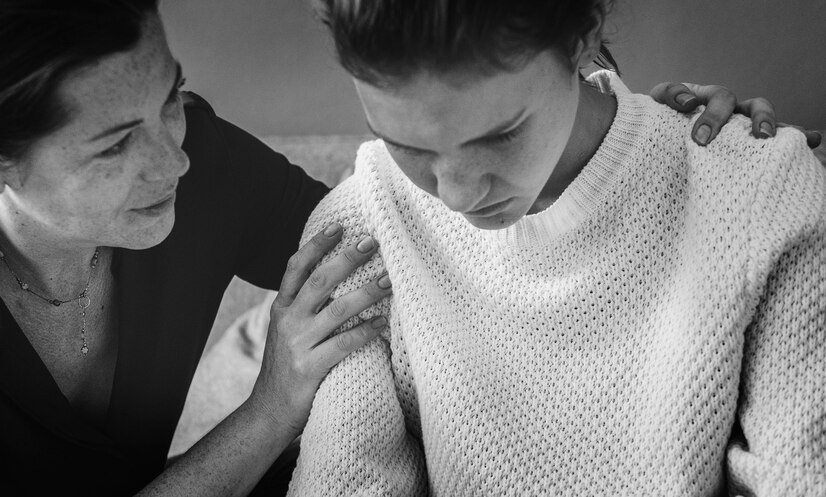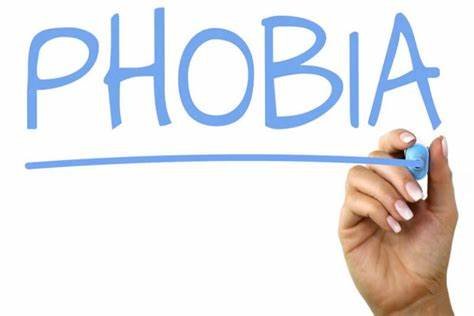When I was going through puberty, I experienced firsthand the emergence of a mood disorder. Sure, every teenager gets moody, but my mood imbalance wasn’t just subclinical – it was diagnosable and extreme. At the time, the diagnosis was Bipolar Disorder, long before psychosis entered the picture.
I was in high school, not very popular, and isolated from my peers – no lunch breaks shared with friends, no solid clique to rely on. As I became more aware of how starved for connection I was, my mood dysregulation worsened. I grew volatile, behaving bizarrely and feeling constantly agitated.
Without coping skills, a good therapist, or close friends as supports, my behavior spiraled. The emotional pain I endured eventually transformed into numbness. I didn’t want to feel pain anymore, so my body responded by disconnecting me from those feelings altogether. At the time, I suppose it was a survival mechanism – my body adapting to extreme distress in the only way it knew how.
But maladaptive coping mechanisms, as they often do, eventually collapse under their own weight. And when I collapsed, I turned to even more destructive behaviors. This was when self-harm entered my life.
I was numb. I wanted to feel something again.
One day, I walked into my family’s bathroom, rummaging through the drawers. There, I found my father’s razor blades. I’d heard about cutting from television and movies, and without hesitation, I decided to try it.
I pressed the blade against my wrist, making shallow cuts along the veins – just enough to feel something. But instead of comfort or relief, all I felt was pain. Sharp, physical pain.
“Ahh, ouch!” I thought. This wasn’t the feeling I’d been hoping for. I expected something warmer, maybe a strange intimacy with the past – a reminder of happier times from childhood. But the pain only intensified.
Still, I convinced myself that if I cut deeper, I could push through the pain and reach a sense of relief. I was wrong. The deeper the cuts, the more intense the pain – physical pain that mirrored the emotional pain I had been trying to escape. Now, I found myself caught between two extremes.
These cuts weren’t deep – superficial, the kind that mental health professionals often recognize as a cry for attention. And truthfully, that’s what I was crying for. I was desperate for attention from peers and family, and in my mind, this was the only way to get it.
When my parents came home, I rushed outside to confront them.
“Look at what you made me do!” I yelled.
In that moment, I wanted them to know how much I was hurting, but I also wanted to place blame. I accused them – indirectly suggesting their behavior had driven me to this point.
But here’s the truth: my choice to self-harm was my own.
Yes, I was angry – at my family, at the world – but the decision to harm myself came from me alone.
In mental health, we often remind clients of a simple but essential truth: no one controls your behavior but you. No one can force your actions or choices. This was a lesson I had to learn for myself, and it remains one I hold onto today.
If you find yourself in pain, blaming others, or feeling out of control – pause. Remember my story.
At the time, I feared I would always be in pain. For those living with mental illness – whether a long-standing diagnosis or something new – the fear of relapse or worsening symptoms is real. Questions swirl:
Will I always have this diagnosis?
What if the symptoms never go away?
How will I know when I’m better?
The path forward lies in understanding your diagnosis and prognosis. The more you know, the better equipped you are to create a plan for managing your condition.
Recovery isn’t linear, and for those with chronic conditions or co-morbidities, the road can feel long and uncertain. But having a realistic, proactive stance toward healing is crucial.
Here’s the irony – and the truth. When life presents multiple problems, the quickest path to relief is finding solutions. But when problems stack up, solutions require more skill, awareness, and energy. As the volume of issues increases, so must the inputs into recovery. By inputs, I mean the energy, self-awareness, and support systems you cultivate to navigate the journey.
Turning things around is possible – but it will take everything you’ve got.
Max E. Guttman is the owner of Mindful Living LCSW, PLLC, a private mental health practice in Yonkers, New York.
- Max E. Guttmanhttps://mentalhealthaffairs.blog/author/max-e-guttman/
- Max E. Guttmanhttps://mentalhealthaffairs.blog/author/max-e-guttman/
- Max E. Guttmanhttps://mentalhealthaffairs.blog/author/max-e-guttman/
- Max E. Guttmanhttps://mentalhealthaffairs.blog/author/max-e-guttman/







